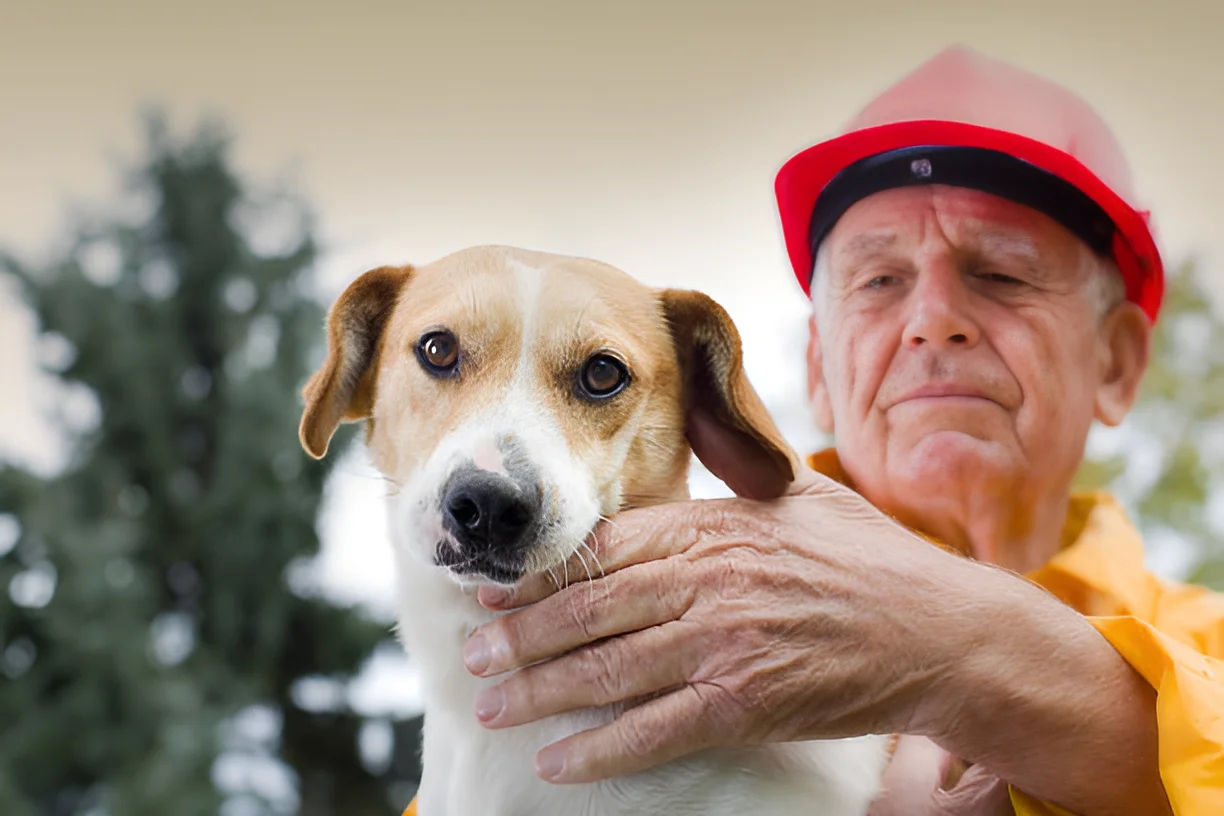Yes, dogs can instinctively know when to protect their owners, often driven by their natural instincts, training, and the bond they share with their human companions. This article explores the fascinating ways dogs demonstrate protective behaviors, the factors influencing these actions, and how to nurture and manage these instincts effectively.
Dogs have been known as man’s best friend for centuries, providing companionship, loyalty, and protection. But how do dogs know when to protect their owners? This comprehensive guide delves into the science and behavior behind canine protectiveness, examining the roles of instinct, training, and the human-dog bond.
The Science Behind Canine Protectiveness
Instinctual Behavior
Dogs are descendants of wolves, and many of their behaviors are rooted in their wild ancestry. One of these behaviors is the instinct to protect their pack.
- Pack Mentality: In the wild, wolves protect their pack members from threats. This instinct has been passed down to domestic dogs, who often see their human family as their pack
- Territorial Instincts: Dogs are naturally territorial animals. They protect their home and family from perceived intruders, which can include other animals or unfamiliar humans.
Breed-Specific Traits
Certain breeds are more predisposed to protective behaviors due to their historical roles and genetic makeup.
- Guard Dogs: Breeds like German Shepherds, Rottweilers, and Dobermans have been bred for their guarding abilities. These dogs are naturally more vigilant and protective.
- Livestock Guardians: Breeds such as the Great Pyrenees and Anatolian Shepherds were developed to protect livestock from predators. Their protective instincts extend to their human families.
Recognizing Protective Behaviors
Body Language
Dogs communicate their protective instincts through various body language cues.
- Alert Posture: A dog that is protecting its owner will often stand tall, with ears perked and eyes focused on the perceived threat.
- Barking and Growling: Vocalizations such as barking and growling are common protective behaviors. These sounds serve as warnings to potential threats.
- Positioning: Protective dogs may position themselves between their owner and the perceived threat, using their body as a barrier.
Behavioral Signs
In addition to body language, certain behaviors can indicate that a dog is in protective mode.
- Following Closely: A protective dog may follow its owner closely, especially in unfamiliar environments.
- Increased Vigilance: Dogs that are protecting their owners may become more vigilant, constantly scanning their surroundings for potential threats.
- Physical Contact: Some dogs may lean against their owner or place a paw on them as a sign of reassurance and protection.
Factors Influencing Protective Behavior
Training and Socialization
Training and socialization play crucial roles in shaping a dog’s protective behaviors.
- Obedience Training: Proper training can help channel a dog’s protective instincts in a controlled manner. Commands such as “stay” and “leave it” can prevent unnecessary aggression.
- Socialization: Exposing dogs to various people, animals, and environments helps them distinguish between normal and threatening situations.
Past Experiences
A dog’s past experiences can significantly impact their protective behaviors.
- Positive Experiences: Dogs that have had positive interactions with people and other animals are less likely to exhibit excessive protectiveness.
- Negative Experiences: Dogs that have experienced trauma or abuse may be more prone to protective behaviors as a defense mechanism.
Training Your Dog to Protect Appropriately
Basic Obedience
Teaching your dog basic obedience commands is the foundation for managing protective behaviors.
- Sit and Stay: These commands help control your dog’s movements and prevent them from reacting aggressively.
- Recall: A strong recall command ensures your dog returns to you when called, even in potentially threatening situations.
Advanced Training
For those who want their dogs to have more structured protective behaviors, advanced training may be necessary.
- Guard Dog Training: Professional guard dog training teaches dogs to protect on command and to differentiate between real threats and normal situations.
- Controlled Aggression: Training focuses on controlling a dog’s aggression, ensuring they only act protectively when truly necessary.
The Human-Dog Bond
Building Trust
A strong bond between a dog and its owner enhances protective behaviors.
- Consistent Interaction: Spending quality time with your dog builds trust and strengthens your bond.
- Positive Reinforcement: Rewarding your dog for good behavior reinforces their trust in you and encourages protective instincts.
Understanding Your Dog
Understanding your dog’s unique personality and needs is crucial for managing protective behaviors.
- Individual Differences: Every dog is different. Some may naturally be more protective, while others are more relaxed.
- Respecting Boundaries: Respect your dog’s boundaries and comfort levels to prevent stress and anxiety.
Common Misconceptions About Protective Dogs
Aggression vs. Protection
It’s important to distinguish between protective behavior and aggression.
- Protective Behavior: Protective dogs act to defend their owners from perceived threats. This behavior is usually controlled and purposeful.
- Aggression: Aggressive behavior is often uncontrolled and can be directed at anyone, not just perceived threats.
All Dogs Are Protective
Not all dogs exhibit protective behaviors, and that’s perfectly normal.
- Breed Differences: Some breeds are naturally more protective than others. For example, Labrador Retrievers are generally friendly and less likely to show protective behaviors.
- Individual Personalities: Even within protective breeds, individual dogs may vary in their level of protectiveness.
Conclusion
In conclusion, dogs can instinctively know when to protect their owners, often driven by their natural instincts, training, and the bond they share with their human companions. Understanding the factors that influence protective behaviors and how to manage them effectively can help ensure a harmonious relationship between you and your dog.
The photo featured below the post headline is Credit: Jevtic/istockphoto
I hope you find this post helpful and informative. If Yes’ feel free to share it with your friends!
Frequently Asked Questions
How can I tell if my dog is protecting me?
Signs of protective behavior include alert posture, barking, growling, and positioning themselves between you and a perceived threat.
Can all dog breeds be protective?
While all dogs have some level of protective instinct, certain breeds like German Shepherds and Rottweilers are more predisposed to protective behaviors.
How can I train my dog to protect me appropriately?
Basic obedience training and socialization are crucial. For more structured protection, consider professional guard dog training.
Is protective behavior the same as aggression?
No, protective behavior is controlled and purposeful, aimed at defending the owner. Aggression is often uncontrolled and can be directed at anyone.
Can past experiences affect my dog’s protective behavior?
Yes, dogs with positive experiences are less likely to be overly protective, while those with negative experiences may exhibit more protective behaviors.

